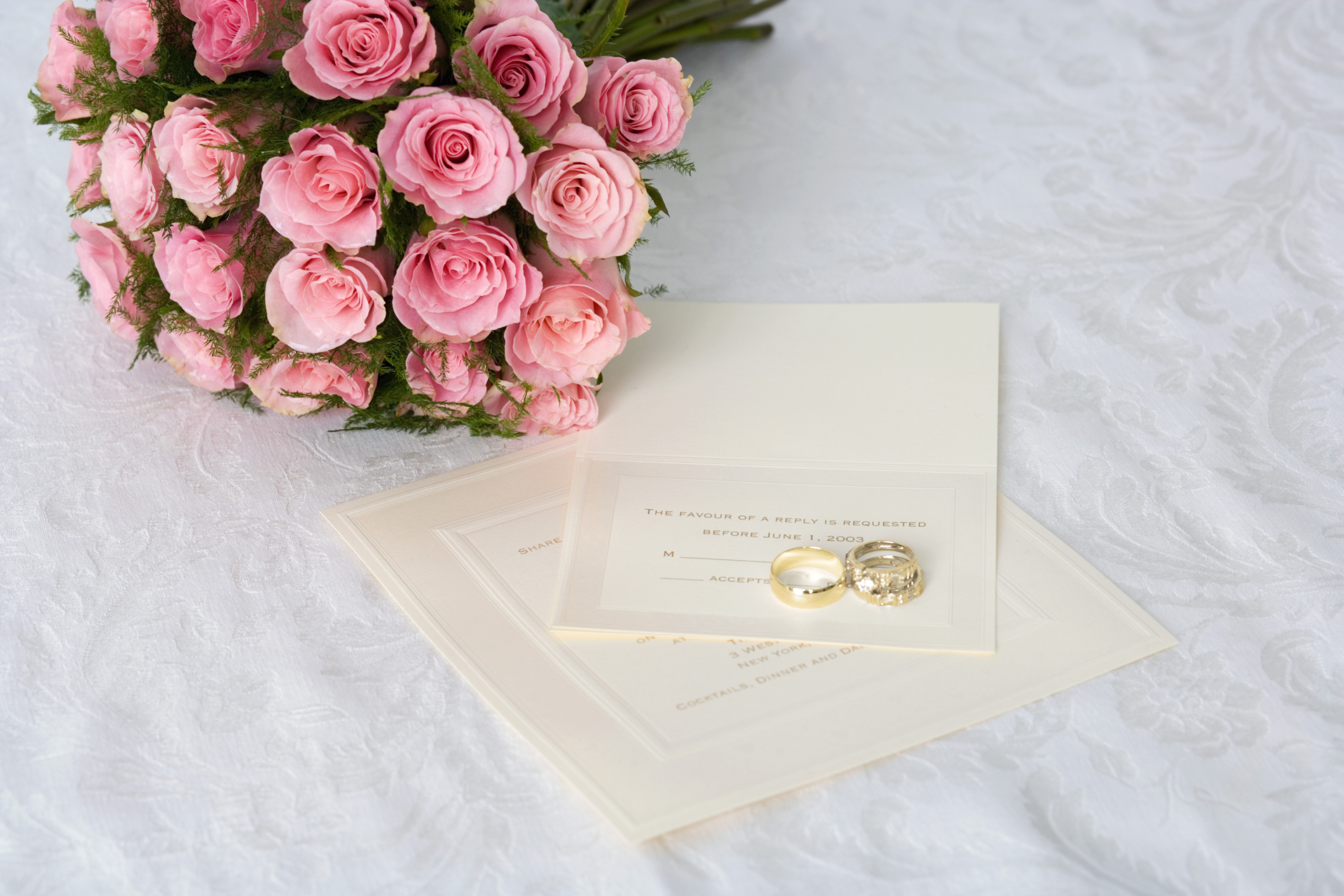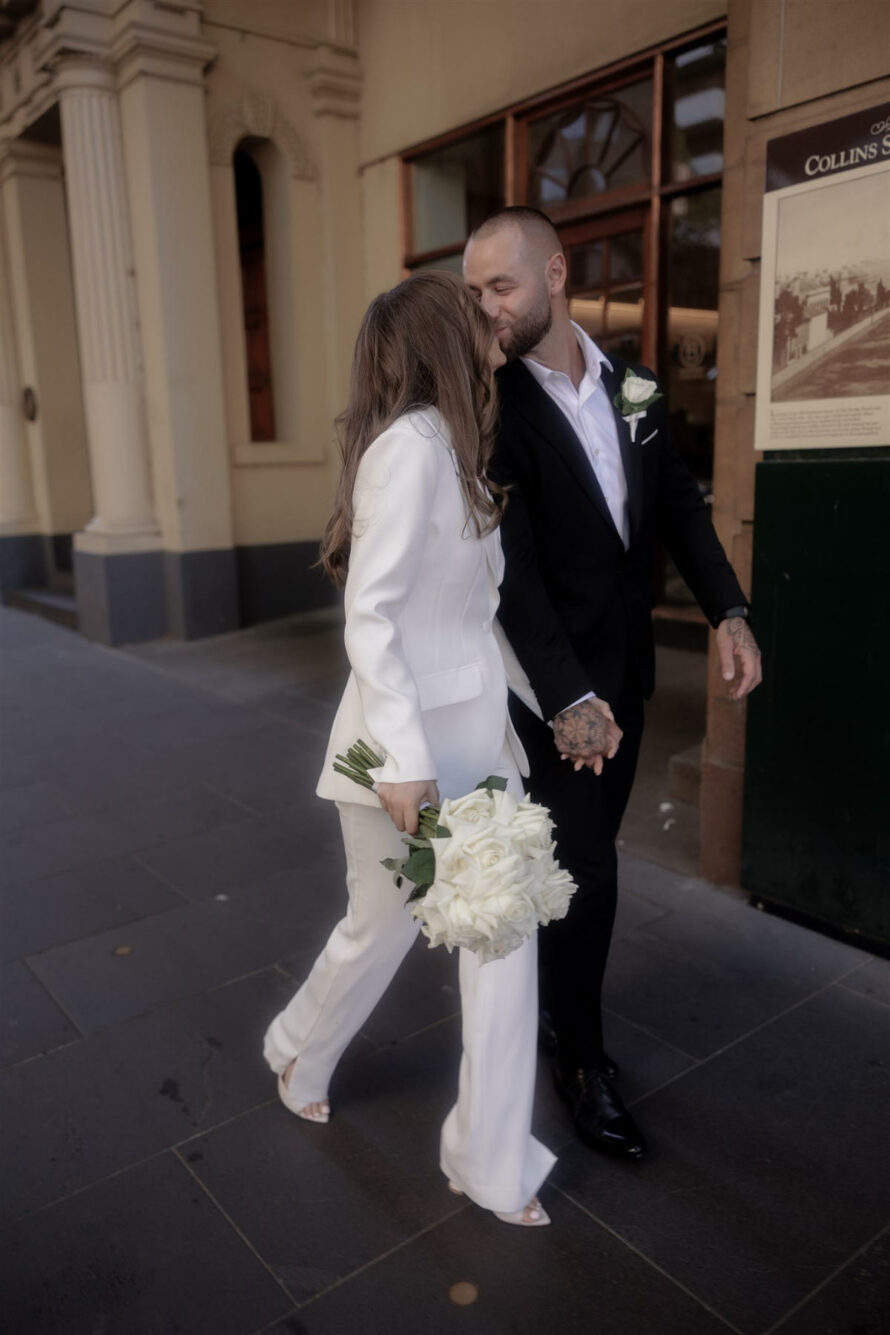Start thinking about your wedding invitations at least six months before the wedding. Here are a few of things you should schedule into your to do list for your wedding invitations:
6 months before the wedding
Setting the scene
Your invitations initially deliver the important information of Who, when, what and where. Invitations are the first point of formal contact with your guests. They establish their expectations and set the mood for your special day. Remember many guests will keep your invitation as a memento of your wedding so it is important to choose carefully.
Look
Start looking as soon as possible. Time will provide for a thoughtful decision. Initially think about the scale, formality, theme and budget for your wedding. Then incorporate the colours of your flowers, bridesmaids and reception decoration to match the wedding colour scheme. Explore the variety of designs, papers, type faces and printing techniques, enjoy the possibilities and choose stationery perfect for you and your wedding.
Consider
If you are hosting a grand or formal wedding you could consider elegantly designed invites.
Alternatively you might host a casual celebration featuring a bright colour scheme.
Wording Options
The Invitation wording that you select should continue to set the tone of the occasion. Again there are many alternatives and what you say traditionally depends on your family circumstance and who is paying for the wedding. For specific wording rules, read over the following pointers.
Who to include
Invites are issued by the hosts of the wedding. These may be the Brides Parents, The Bride and Groom or a close relative of the Bride or Groom. Whoever the host be sure to include their relationship to either the Bride or Groom on the invite.
How to address
The wording on the invitation establishes details of the hosts and the bride and groom. When issuing and addressing invites to your guests it is customary to include their correct titles. Formal title etiquette advises that the bride to be may use either Miss or Ms before her maiden name and all other women be addressed as Mrs, Ms or Miss depending on marital status or known preferences. All men are known as Mr with the exception of Clergy, Judges and Military Officers where their appropriate title is used.
What to include
Other essential wording that follows includes the wedding date and time. The date is written in full. For example Saturday, December 7th 2002. The time is simple, numerals are expected such as 4.30 pm.
Finally include the location of both the ceremony and reception. The full address of the ceremony and reception location should be included, especially when being held in a large city or out of town guests are expected. Address abbreviations should be avoided wherever possible. House numbers are acceptable in written numerals whereas numbered streets are written out in full (ie: Sixth Avenue ). Also use these guidelines when addressing your invitation envelopes to your guests.
Don’t forget to include a workable RSVP date. Extra information you might include in the wording is the event dress code or you may like to feature a meaningful quote.
Typeface Options
Typefaces or fonts are the style of lettering used for the text on the invitations. The typestyle selected should match the formality of the wedding but not detract from your own personal style.
Also consider the ink colour you want to use. If you are planning on printing in silver or gold then a clear and simple typeface will be much easier to read.
Accessories
Fresh ideas for other stationery and mementos go beyond wedding invitations. Exactly how many extras you order depends on the scale, formality and budget of your wedding. If you decide on matching extras it is recommended you order all your stationery at the same time as this is often easier and cheaper. One complete order also ensures your stationery’s paper colour and weight, type face and design is consistent throughout.
Consult Guest List
You will need to finalise your guest list before you order your stationery. If you are having trouble deciding you could try first writing a wish list of everyone you would like to come. Then consult your budget to decide realistically how many guests you can afford. This should give you a set number of guests to work with. To build your real list start from your closest family and include friends you are likely to be in contact with five years after your wedding. Save the remaining guests from your ‘wish list’ as reserves if you want to send additional invites if you receive regrets.
Estimate
Draft your mailing list and keep a copy for your thank you cards. Remember you will not need an invitation for each guest as many of your guests will be couples and families who only require one invitation between them. Adult children over 16, receive their own invitation separate from their parents. Remember to post invitations to your parents and the members of the wedding party as well as your celebrant. Consider that elderly relatives and close friends living overseas will appreciate receiving an invite, even though you may already know they can’t attend. Once you have counted these numbers to arrive at a final tally, add another five or ten just in case.
8 weeks before the wedding
Collect Quotes
You should now be ready to order all your wedding stationery. Obtain written quotes with the details of numbers, colours, paper stock and delivery date. Double check these details when placing your order. Check the product details and quantity. If your order includes printing confirm that the printing details are correct.
Proof Read
You must carefully proof read your sample invitation to check everything from venue and date details to names, addresses , punctuation spacing and spelling. Pass the sample on to a fresh set of eyes to be extra thorough.
Order
When you are happy with these details confirm your order and place a deposit.
6 weeks before the wedding
The Mail Out
Your wedding invitations should be mailed 6 weeks before your wedding and it is important that the majority are sent out together to avoid disappointment. Send international mail 8 weeks prior to your wedding and interstate invitations should be posted around 7 weeks before the wedding date. Overseas and interstate guests should have already been notified informally of the date as soon as it has been set to allow them to make travel arrangements.
RSVP date
Your RSVP date should be set at least 3 weeks before your wedding date until this time you may mail additional invites if regrets come in.
2 weeks before the wedding
Final touches
If necessary label any additional stationery required for the service or reception.




